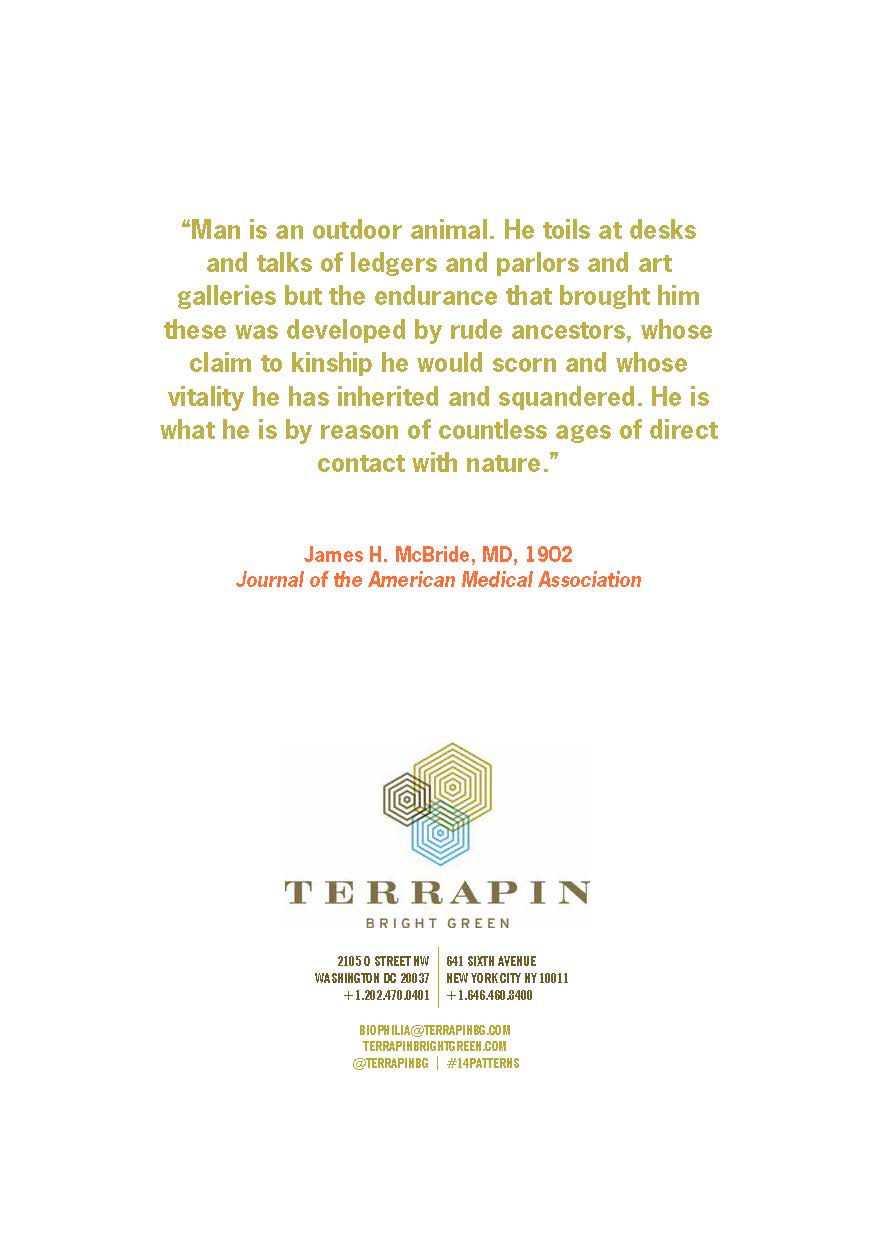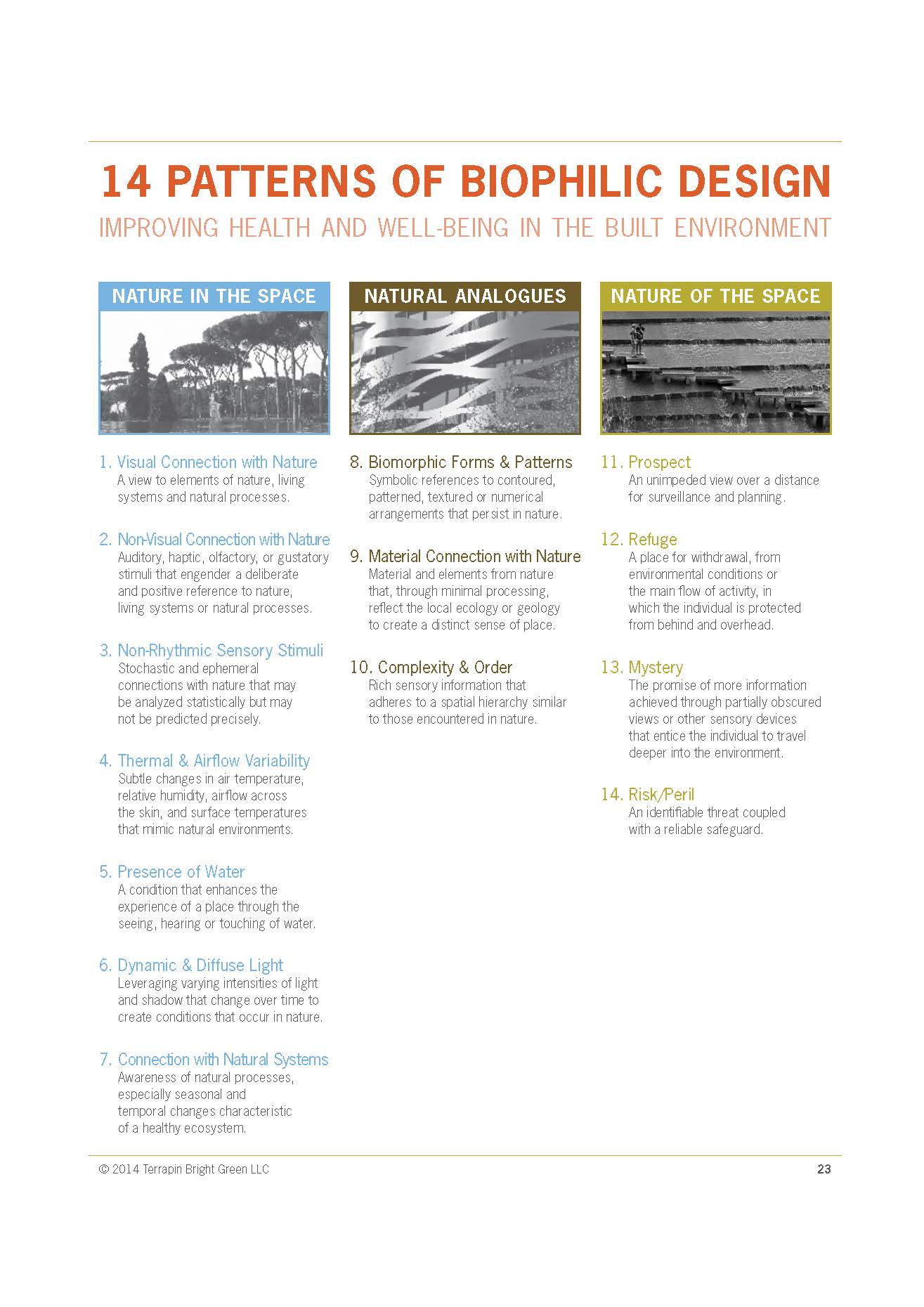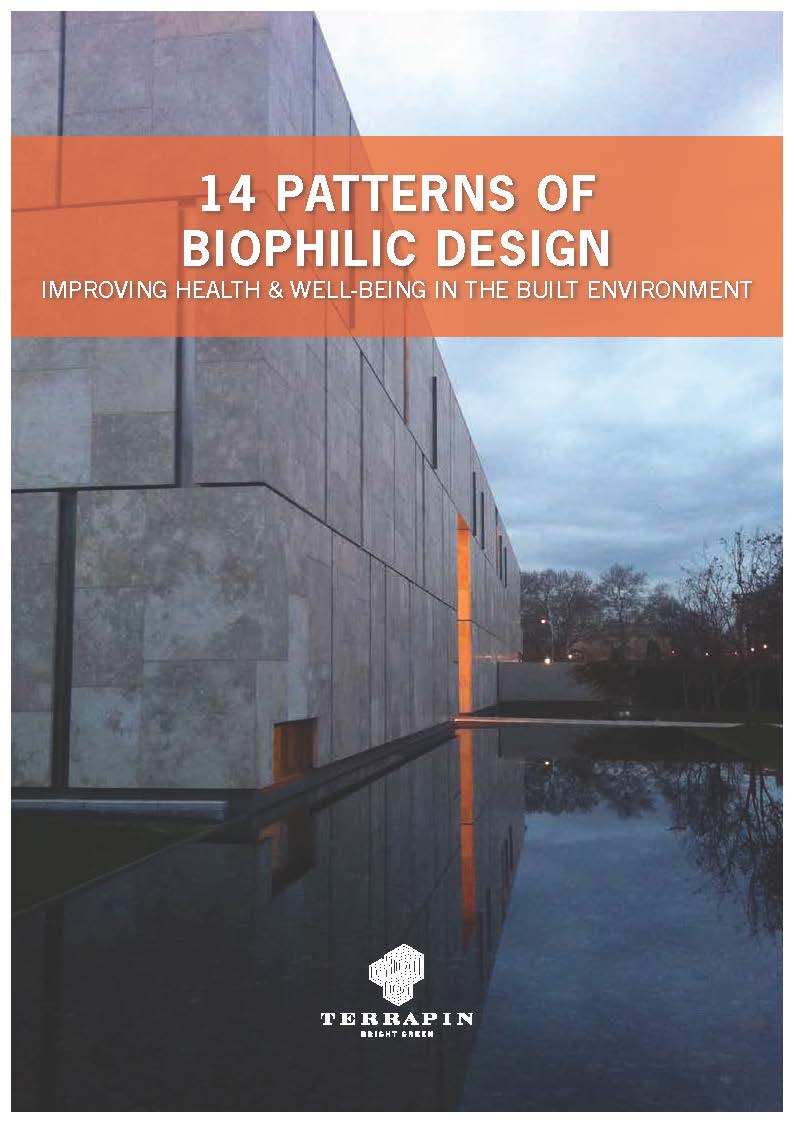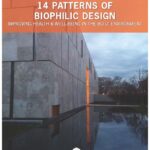Biophilic Design / 14 Patterns
Edward O. Wilson
1984 book – Biophilia
Biophilic design is an approach to design that integrates nature into interior and exterior spaces in order to create a healthier, more productive, and more enjoyable environment for occupants. This approach is inspired by the ideas and research of the renowned biologist Edward O. Wilson. Wilson’s concept of biophilia, the inherent human affinity and connection with nature, has greatly influenced the development of biophilic design. This approach recognizes the importance of the human-nature connection and the benefits it provides for physical and mental well-being.
Biophilic spaces are characterized by the use of natural materials, organic textures, patterns and colors inspired by nature, as well as the presence of plants, water, and natural light. In architecture and urban planning, biophilic design is an approach that aims to create urban and architectural spaces in harmony with nature. This approach focuses on creating more sustainable and resilient urban environments that meet the physical and emotional needs of individuals while preserving the natural environment.
The numerous benefits of biophilic design in architecture and urban planning include improving air quality, reducing energy consumption, increasing biodiversity, and promoting healthy and sustainable lifestyles. Furthermore, biophilic spaces can contribute to reducing stress and anxiety levels, fostering a sense of well-being and calmness in the midst of often stressful urban environments..
In summary, biophilic design is an approach that offers numerous benefits for the health and well-being of individuals while contributing to the creation of a more sustainable and resilient urban environment.
14 PATTERNS OF BIOPHILIC DESIGN
In the PDF document below, the term “biophilic design” is put into practice through the detailed explanation of 14 patterns. These patterns offer concrete guidelines for integrating natural elements into the design of spaces, thereby fostering connection with nature and enhancing the well-being of occupants. The document explores each pattern in detail, providing examples and illustrations to facilitate their application in architectural and design projects. It is a valuable resource for professionals seeking to create spaces that stimulate the senses and connect with nature while providing tangible benefits in terms of air quality, energy and sustainability.
The 14 patterns of biophilic design are a series of principles and concepts that serve as a guide for architects and designers who wish to integrate natural elements into their designs in line with the biophilic approach. The patterns, developed by biologists Stephen R. Kellert, Judith H. Heerwagen and Martin L. Mador, provide practical guidelines for creating spaces that promote connection with nature and enhance occupant well-being.
1. Visual Connection with Nature
2. Non-Visual Connection with Nature
3. Non-Rhythmic Sensory Stimuli
4. Thermal and Airflow Variability
5. Presence of Water
6. Dynamic and Diffuse Light
7. Connection with Natural Systems
8. Biomorphic Forms and Patterns
9. Material Connection with Nature
10. Complexity and Order
11. Prospect
12. Refuge
13. Mystery
14. Risk/Peril
source: terrapinbrightgreen.com
LEARN MORE
14 Patterns of Biophilic Design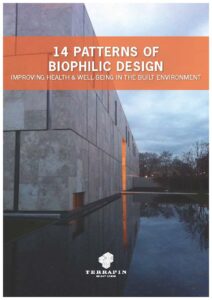
Related posts
Biophilic Design: Supporting People and Planet | Oliver Heath | TEDxUCL

